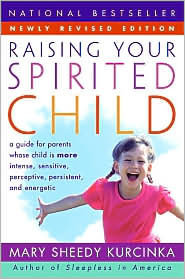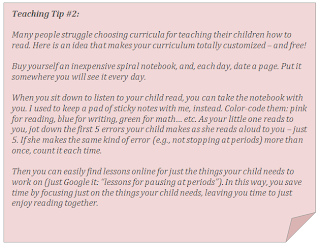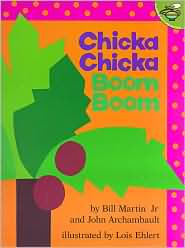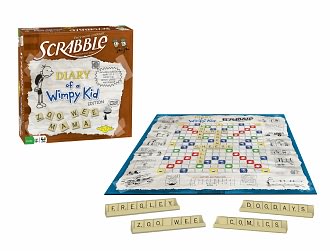 |
| Malik finds a comfy seat for independent reading! |
[NOTE: We always keep things free form in our plans. This year, our little guy spent a few months in public school, when we moved to a new town while our home is being renovated. So we didn't get to everything on this list, but we did a lot of it, and will finish the zoology over the summer. We all decided it's back to homeschool next year -- yay!]
We are heading into our second full year of homeschooling are youngest son, Malik, who is 7. Last year was a year of unlearning bad habits (his and ours) and re-learning what education was supposed to be like...
You shall teach [My words] to your children, talking of them when you are sitting in your house, and when you are walking by the way, and when you lie down, and when you rise. (Deut 11:19)
Scheduling:
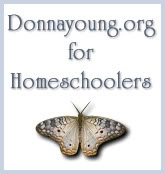 I'm refining our schedule so that we all have fun being with one another, and letting go of some things (like busywork). We ARE using some good, Christian books and getting more organized (I HAVE to if I am to work full time and homeschool, too). We'll see... At any rate, I have found Donna Young's Homeschool Resources and Printables to be a lifesaver for all things organizational (AND she is a great help if you have questions, too!). I just love the homeschooling community...
I'm refining our schedule so that we all have fun being with one another, and letting go of some things (like busywork). We ARE using some good, Christian books and getting more organized (I HAVE to if I am to work full time and homeschool, too). We'll see... At any rate, I have found Donna Young's Homeschool Resources and Printables to be a lifesaver for all things organizational (AND she is a great help if you have questions, too!). I just love the homeschooling community...We took the week of Independence Day off as a vacation, and I took the time to work on curriculum scheduling that week. Then we added one content area each week, in this order:
- Math (Malik's least favorite subject) (because we needed the extra practice)
- Independent Reading/Reading Log (to get him in the habit of recording his learning)
- Medieval History/Notebooking (again, to instill habits of the mind and body; this is his favorite subject)
- Read-Aloud/Notebooking (he chose the Burgess Bird Book for Children to start with)
- Science (full curriculum)
- World History (full curriculum)
- Word Study
- Writing Skills
- Bible Study
- Spanish
_________________________________________________________
Curriculum Details, by subject:
Here is our curriculum for Grade 3 (2 1/2 - 3 hrs per day, 5 days a week):
Math (daily)
Math Mammoth Grade 3 Complete Curriculum (include 7 software programs with interactive games, and two downloadable textbooks). Math Mammoth is a mastery program (not spiraling). We tried a different resource (Everyday Math, Grade 3) last year, and we had too many holes (from public school) for him to feel successful at it.
 I print out a few lessons at a time, and we keep them in a spiral notebook, along with extra practice pages from whatever workbooks we had laying around at the end of last year. There are a lot of problems for each lesson. We try to do about 2 pages a day, but I let my son pick 1-2 problems out of each section, and, if he does ok with them, we don't do any more. If he has trouble, I write comments right on the page, and we do a problem or two from that section the next day.
I print out a few lessons at a time, and we keep them in a spiral notebook, along with extra practice pages from whatever workbooks we had laying around at the end of last year. There are a lot of problems for each lesson. We try to do about 2 pages a day, but I let my son pick 1-2 problems out of each section, and, if he does ok with them, we don't do any more. If he has trouble, I write comments right on the page, and we do a problem or two from that section the next day.I bought two resources that were very helpful for my son:
Learning Resources Base 10 Blocks, Starter Kit
Learning Resources "Big Time" 12-hour Student Clock
Science (2 times per week)
 Last year, I created units, based on my son's interests. This year, I discovered Apologia's Exploring Creation Through Zoology I: Flying Creatures of the Fifth Day. I purchased both the text book and the notebooking journal. We follow the handy schedule that is at the front of the notebooking journal. We take two weeks for each lesson, doing most of the reading and narration on the first day of the week, and the activities, projects and experiments on the second day. There are a lot of options, and links to an online partner website. We try to do all the pieces, including the optional activities. My son likes the experiments best (and so does his mom!).
Last year, I created units, based on my son's interests. This year, I discovered Apologia's Exploring Creation Through Zoology I: Flying Creatures of the Fifth Day. I purchased both the text book and the notebooking journal. We follow the handy schedule that is at the front of the notebooking journal. We take two weeks for each lesson, doing most of the reading and narration on the first day of the week, and the activities, projects and experiments on the second day. There are a lot of options, and links to an online partner website. We try to do all the pieces, including the optional activities. My son likes the experiments best (and so does his mom!).We especially like that the book supports our Bible studies. The Zoology I course studies all the flying creatures: birds, bats, insects and flying reptiles (pteranodons, etc.), all of which were created on the fifth day.
Nature Study (daily)
 We experimented last year, but I think we have hit a good rhythm with our nature study this year, and have struck a balance between pure nature study and nature study with more science content (I can't help it -- I'm a scientist by training). We use a number of resources, but we follow a system that looks something like this:
We experimented last year, but I think we have hit a good rhythm with our nature study this year, and have struck a balance between pure nature study and nature study with more science content (I can't help it -- I'm a scientist by training). We use a number of resources, but we follow a system that looks something like this:Because we are studying flying creatures, we are reading The Burgess Bird Book for Children online (we use The Baldwin Project's version, but there are others). [NOTE: we read a lot of e-texts, and I am seriously considering purchasing a Nook Color just for downloading e-texts and reading bookmarked web texts -- I'll keep you posted. Each story introduces another common yard bird, and the birds are introduced according to their families.
 After reading about a new bird, I consult the Handbook of Nature Study website, to see if Barbara McCoy has any nature studies already put together for that bird. [She almost always does...] We do all the activities and study all the resources in the nature study, and also read the corresponding section from the Handbook of Nature Study, by Anna Comstock (this is also available as an e-text, but I purchased a copy on Amazon).
After reading about a new bird, I consult the Handbook of Nature Study website, to see if Barbara McCoy has any nature studies already put together for that bird. [She almost always does...] We do all the activities and study all the resources in the nature study, and also read the corresponding section from the Handbook of Nature Study, by Anna Comstock (this is also available as an e-text, but I purchased a copy on Amazon).We carefully study the bird from the Burgess chapter, but we also do a little research on any bird from that family that we are likely to see where we live, by consulting our field guide and completing a notebooking page.
When we finish a nature study, we write up our study as a blog entry, and post a link on the Outdoor Hour Blog Carnival.
Nature study is one of our favorite activities, so we spend a lot of time on it!
History of the Middle Ages (daily)
We started using Ambleside Online Year 2 in about March of last year. My son fell in love with the history stories ("I only want to do science twice a week, but can we do history every day?"). So, because we started Year 2 so late, we are just repeating it this year. Year 2 focuses on the years 1000 AD through the Middle Ages.
Right now, we read the stories as read-alouds, while my son completes some kind of notebooking activity (I usually print out a bunch of different notebooking pages on the historical figure or event, and let him decide what he feels like doing that day). We are also creating a model of a motte-and-bailey castle -- we'll post on that one later.
World History (daily)
 Because the Ambleside readings are very Eurocentric, and because we didn't do Year 1, I wanted to give my son a nice overview of the ancient times, as well, so we purchased A Child's History of the World (which is one of the texts for Ambleside Year 2, also). The complete course includes the text book, a teacher's manual, and a workbook, which contains note-taking pages and directions for enrichment activities. We do all the enrichment activities.
Because the Ambleside readings are very Eurocentric, and because we didn't do Year 1, I wanted to give my son a nice overview of the ancient times, as well, so we purchased A Child's History of the World (which is one of the texts for Ambleside Year 2, also). The complete course includes the text book, a teacher's manual, and a workbook, which contains note-taking pages and directions for enrichment activities. We do all the enrichment activities.We supplement our Middle Ages and World History studies with a weekly current events article from one of the online news magazines for kids. I try to find an article that is set in a geographical location that we are reading about in either World History or Medieval History.
We keep our history notebook in the format of a Book of Centuries, with all our notes from both studies in one place.
English Language Arts (daily)
I am learning to take a "hands-off" approach with a lot of the direction for language arts this year. Malik is an independent reader and writer, and, last year, I discovered that I got in the way when I tried to direct this subject too much. Here are the things that I DO make sure that I address in language arts, using the "Daily Five" as a structure.
- Read to Self: Our little guy is a voracious reader, and can down a novel a day, when he's on a roll. At first, we were unsure whether or not he was really "reading" or if he was just letting the words get into his eyeballs! So we quizzed him heavily after one novel, irritated him, and he knew every detail and even got subplots! So we don't interfere. My chief job is book gatherer at our local library. Currently, he is enjoying Secrets of Droon, Diary of a Wimpy Kid, and a re-read of all the Captain Underpants books that he can find -- all boy stuff! We do require him to keep a reading log daily -- eventually these books will show up on the blog as a literature list -- stay tuned! We haven't settled on a response method yet, but he likes book projects, so I'm entertaining the idea of a monthly project. I'll pull out Better Than Book Reports and see what we might do..
Read to Someone: Malik has discovered the joys of "role play" this summer (we used to call it "playing pretend" when we were little). One of the fun things about the graphic novel format of some of his favorite book series is that we can use "reader's theater" to share the novel, which lines right up with his current dramatic interests. This makes sharing a book so much fun, especially when we adopt the characters' mannerisms and different voices.
- Listen to Reading: I read many of his science and social studies reading aloud. I like this, because it gives me an opportunity to stop and clarify, or give a little background information -- the content is so rich! We always follow up read-aloud with some kind of notebooking activities. Science and World History both have notebooking journals or workbooks as part of the curriculum. We add our own pages for other content areas. We pull notebooking pages from all kinds of places, but usually consult the Notebooking Treasury and Enchanted Learning, first.

- Work With Words: Malik is a natural speller. I had intended last year to use his spelling errors to choose his spelling focus, but he didn't really enough errors for me to decide where to begin. So I administered the Developmental Spelling Inventory (DSI) from Words Their Way, to determine his literacy level ("Harder Suffixes and Prefixes, and Roots"). He expressed an interest in Latin, after learning about Latin binomials in his Zoology I studies, so I picked up a copy of Vocabulary Bridges: English to Latin and Greek (Trivium Pursuit), to help us pick word chunks for our focus. We also add content vocabulary (castle, moat, motte, bailey for this week, for example). We do a lot of word sorts and vocabulary linking activities from a lot of different sources.
- Work on Writing: This is another area where I am learning that "less is more," with respect to my involvement. Malik loves to write, and is a good writer. Last year, I found that, the more I directed his writing (read, "interfered with"), the less he produced, and the poorer the quality. So I stopped. He currently has a whole spiral notebook full of detailed illustrations of a bunch of characters that he calls the "Stick Rangers," stick figure paramilitary kind of guys, with full regalia, and detailed "specs," including their favorite weapons, their specialties, and bios on each one. He also has the beginnings of some graphic novels that were inspired by his Medieval History studies ("The Adventures of Alexander the Archer" is one). These are delightful, and I don't get in the way. I DO look at his notebooking entries on about a weekly basis, to identify particular skills for a focus (use of apostrophes, commas in a series, speech bubbles, there/their/they're, are some of our recent foci). I pull practice activities from Daily Language Review, Grade 3, but I pull items specific to the focus -- I don't work through the book from front to back.

 We live in a very culturally diverse city, and our son is exposed to many languages during his everyday life, so he has developed a natural "ear" for languages and language patterns. We are starting with Spanish (because it is a language that I speak and have materials for), but we will stretch to other ones. My goal here is to raise him as a bilingual child, but to also expose him to other languages as he has interest. I discovered Mis Cositas, a site that has a wealth of resources and downloadable mini-courses for a number of languages. We will begin with El Bosque Tropical, which a a thematic unit on the tropical rainforest for beginning Spanish studies.
We live in a very culturally diverse city, and our son is exposed to many languages during his everyday life, so he has developed a natural "ear" for languages and language patterns. We are starting with Spanish (because it is a language that I speak and have materials for), but we will stretch to other ones. My goal here is to raise him as a bilingual child, but to also expose him to other languages as he has interest. I discovered Mis Cositas, a site that has a wealth of resources and downloadable mini-courses for a number of languages. We will begin with El Bosque Tropical, which a a thematic unit on the tropical rainforest for beginning Spanish studies.__________________________________________________________
Other Helpful Links:
There are so many! But here is a list of the places that make our life easier on a day-to-day basis (besides the ones already mentioned; also, check my individual posts for specific ones that come up during our lessons):
- Curriculum Choice -- links to other homeschoolers (like us!) and homeschooling resources
- Curr Click -- free and low-cost curriculum materials, created by other homeschoolers
- Scholastic -- I make frequent use of the Book Wizard for leveling my library and tracking my son's reading level; we also use the Scholastic News curriculum materials for our current events
- Amazon -- You can find anything here...
- Dictionary.com -- Because we just love words in our house...



